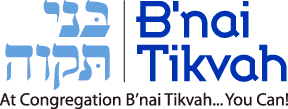Click the “Read More” for details and maps.
Unless explicitly stated, the times specified are for Minyan only. It should be assumed the family is open for visitations throughout each day.
[ai1ec view=”stream” cat_name=”shivah”]
During Covid 19
While we can’t be together to recite the Mourner’s Kaddish, please consider this alternative prayer.
Words of Solace
There are no magic words of solace, no ritual, however elaborate, that can take away the pain, the confusion, the guilt, the sadness, the whole jumbled mess of emotions that arise at this most difficult of times.
But, we can be there… Be there in the simplest and least imposing ways. We hug, we cry, we listen, and, of course, we bring food. (We are, after all, Jews). We try, not through our words but, through our actions, to say: “We are here, we care, we will not let you suffer alone.” And if we do not know them yet, well, what better way to build a relationship and a community than to be there for each other at the darkest of times?
Around death and mourning, there is a world of ritual-specific burial practices, guidelines for mourners, advice for those who come to comfort them. Each of these traditions has a clear purpose and a profound meaning. Together, they allow the mourner to work through the grief and disorientation that death brings in its wake. And, in the end, they reinforce the bonds between the mourner and the community.
When our mourners at Bnai Tikvah leave the shelter of the shiva house, and return to “normal” life, they do so knowing that an entire congregational community of friends and neighbors has embraced them. And thus, out of the pain of death, comes a renewed appreciation of life.
Rabbi Wolkoff’s 11 part dissertation on “Death and Mourning”
Audio Player01. What Do You Do?
Audio Player02. When We Die
Audio Player03. Rely on Tradition
Audio Player04. At The Funeral
Audio Player05. Ritual Purity
Audio Player06. Cremation and Embalming
Audio Player07. Chevra Kadisha
Audio Player08. Always Seven Days
Audio Player09. At The Shivah House
Audio Player10. A Time of Mourning
Audio Player11. Final Insights
Discover Judaism Internet Radio with Bnai Tikvah on BlogTalkRadio.
